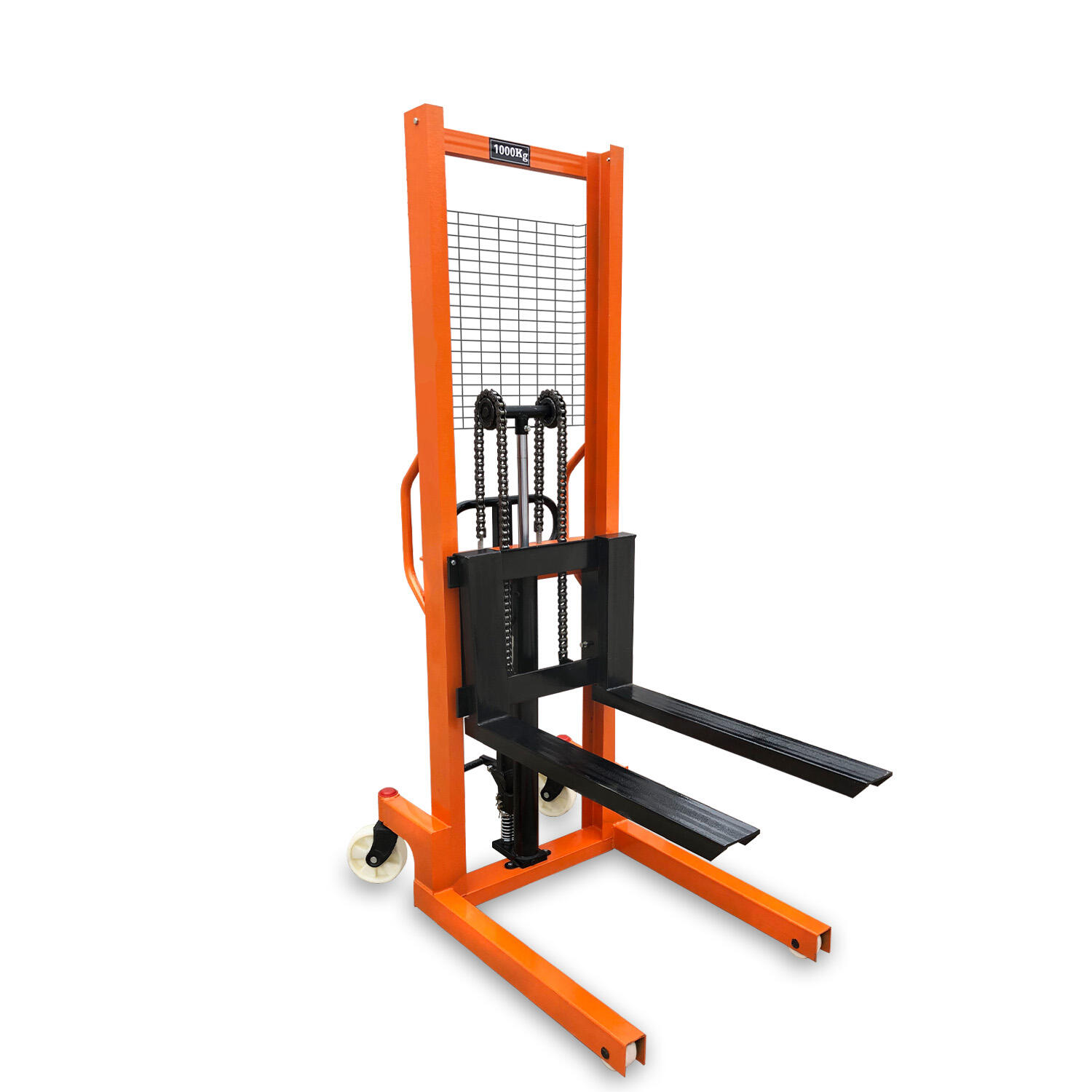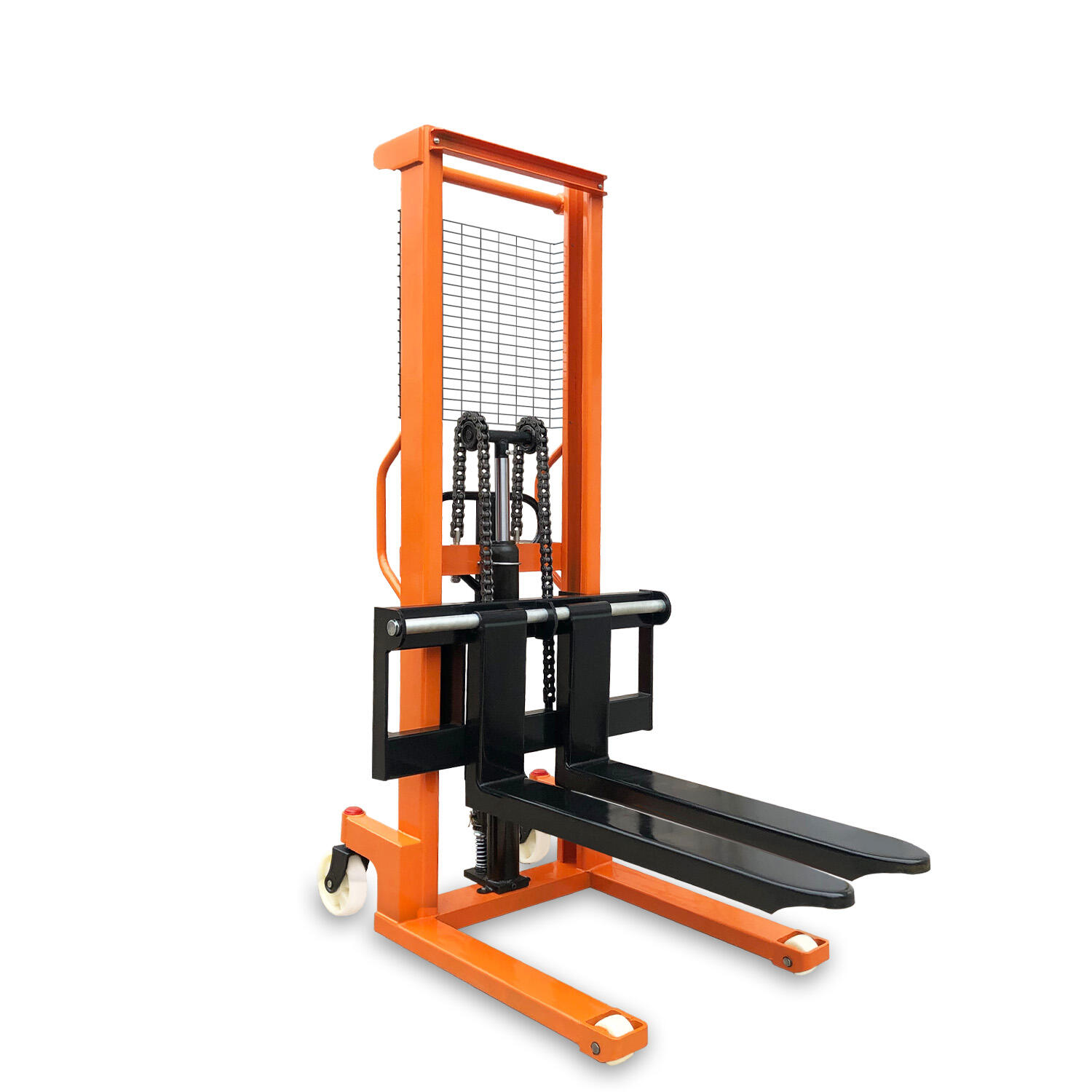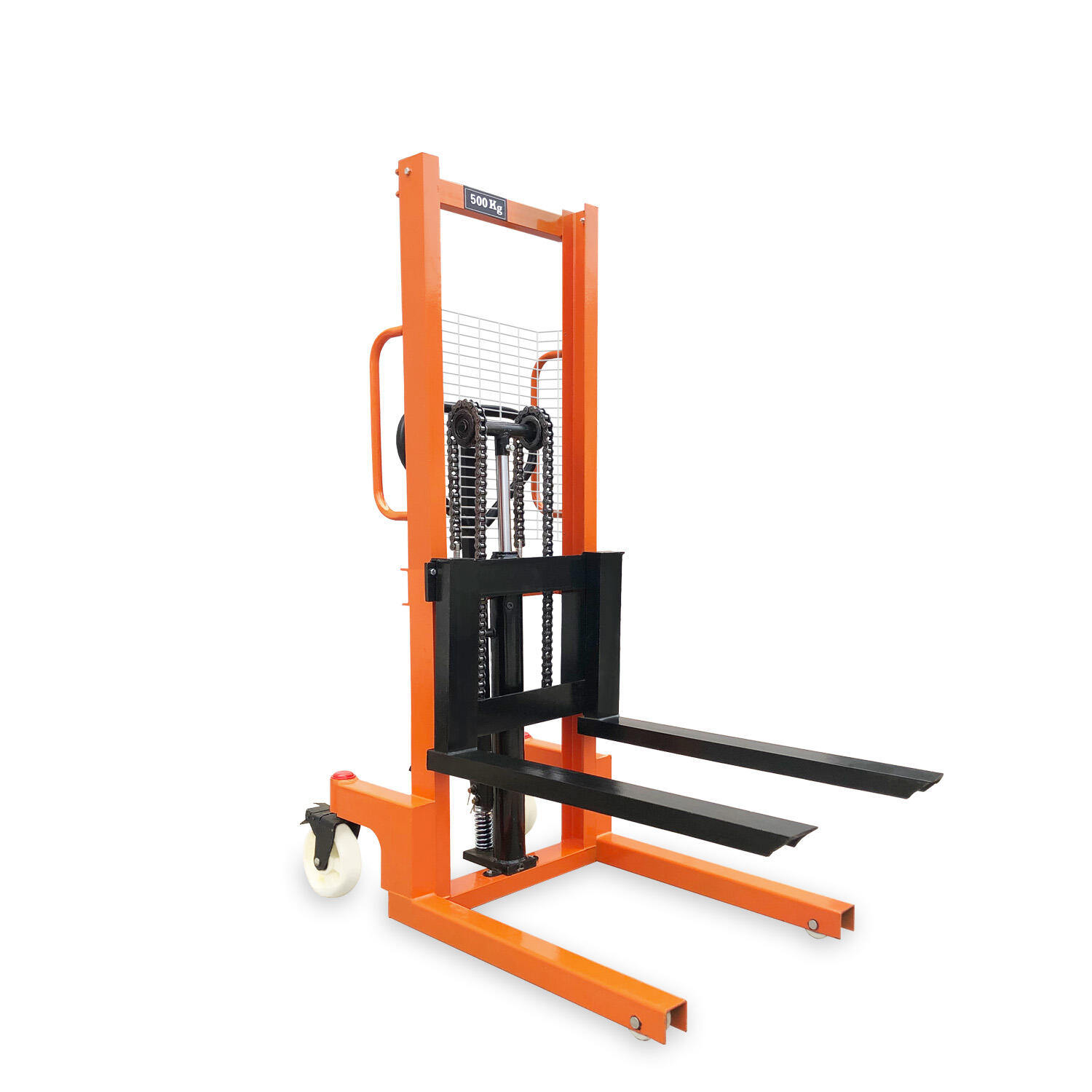A manual stacker 1.5 ton is a robust and versatile material handling equipment designed to efficiently lift and transport loads up to 1.5 tons, making it an indispensable tool in various industrial, commercial, and warehouse settings. This type of stacker combines the simplicity of manual operation with the reliability of a hydraulic system, offering a cost-effective solution for businesses that need to handle medium-weight loads without the expense of electric or fuel-powered machinery. Its design focuses on durability, ease of use, and safety, ensuring that operators can perform lifting tasks efficiently while minimizing the risk of accidents or fatigue. One of the key features of a manual stacker 1.5 ton is its hydraulic lifting mechanism, which allows operators to raise and lower loads with minimal physical effort. The hydraulic system consists of a hand pump, a cylinder, and hydraulic fluid, working together to convert the operator’s manual pumping action into powerful lifting force. This eliminates the need for strenuous manual lifting, reducing the strain on the operator’s back and arms, which is crucial for maintaining productivity during long work shifts. The lifting process is smooth and controlled, ensuring that loads are raised evenly and securely, even when dealing with unevenly distributed weights. The construction of a manual stacker 1.5 ton is engineered to withstand the demands of regular use with heavy loads. The frame is typically made from high-grade steel, providing exceptional strength and stability to support the 1.5-ton capacity. Steel is chosen for its durability and resistance to bending or warping under pressure, ensuring that the stacker remains structurally sound over time. Many models also feature reinforced forks, which are the parts that come into direct contact with the load. These forks are made from thick, hardened steel to prevent damage, even when handling sharp or heavy objects, and they are designed to fit standard pallet sizes, making the stacker versatile for various types of goods, including boxes, crates, and pallets. Maneuverability is another important aspect of the manual stacker 1.5 ton. Despite its ability to handle heavier loads, it is designed to be relatively easy to move, thanks to its balanced weight distribution and high-quality wheels. Most models are equipped with two fixed rear wheels for stability and two swivel front casters that allow for smooth steering and tight turns. This wheel configuration enables operators to navigate through narrow aisles, around obstacles, and into tight spaces, such as the back of a delivery truck or between storage racks. The overall weight of the stacker is kept manageable, ensuring that operators can push or pull it with ease, even when loaded to its maximum capacity. Lifting height is a critical specification for any stacker, and the manual stacker 1.5 ton is available in various lifting heights to meet different operational needs. Common lifting heights range from 1.5 meters to 3 meters, allowing operators to stack loads on high shelves, pallet racks, or into the upper levels of trucks. The mast, which is the vertical structure that supports the lifting mechanism, is designed to be rigid and stable, preventing swaying or bending when lifting heavy loads to maximum height. Some models feature a two-stage mast, which allows for higher lifting heights while maintaining a compact closed height for easy storage when not in use. The choice of lifting height depends on the specific requirements of the operation, such as the height of existing storage infrastructure or the need to load goods onto tall vehicles. Safety is a top priority in the design of a manual stacker 1.5 ton, with several features integrated to protect both the operator and the load. One of the most important safety features is the overload protection valve, which prevents the stacker from lifting loads exceeding the 1.5-ton capacity. This not only protects the stacker from structural damage but also reduces the risk of tip-overs, which can cause serious injuries or damage to goods. The lowering mechanism is designed to be controlled, with a release valve that allows the operator to lower the load slowly and precisely. This prevents sudden drops that could damage the load or destabilize the stacker. Additionally, many models are equipped with a parking brake that locks the wheels in place when the stacker is stationary, ensuring that it does not move during loading or unloading. Ergonomics is another key consideration in the design of a manual stacker 1.5 ton, as it directly affects operator comfort and productivity. The hand pump handle is typically positioned at a comfortable height, allowing operators to pump without bending or stretching excessively. The handle is often padded or contoured for a secure grip, reducing hand fatigue during extended use. Some models also feature an adjustable handle height, enabling operators of different sizes to find the most comfortable position. These ergonomic features help to reduce the risk of workplace injuries and ensure that operators can work efficiently for longer periods. The versatility of the manual stacker 1.5 ton makes it suitable for a wide range of applications across various industries. In warehouses, it is used to stack pallets of inventory, organize storage areas, and load/unload delivery trucks. In retail settings, it helps move heavy stock from storage rooms to sales floors, such as large appliances, bulk food items, or furniture. In manufacturing facilities, it is used to transport raw materials to production lines or move finished products to storage areas. It is also useful in workshops, garages, and logistics centers where the handling of medium-weight loads is a regular part of daily operations. Maintenance of a manual stacker 1.5 ton is relatively straightforward, thanks to its simple design and minimal moving parts. Routine maintenance tasks include checking the hydraulic fluid level and ensuring there are no leaks in the hydraulic system, as proper fluid levels are essential for smooth operation. The wheels and casters should be inspected regularly for wear and tear, and lubricated to ensure smooth movement. The forks and frame should be checked for signs of damage, such as cracks or bending, and any issues should be addressed promptly to prevent further damage. The hand pump mechanism should also be lubricated periodically to ensure it operates smoothly. With proper maintenance, a manual stacker 1.5 ton can provide reliable service for many years, making it a cost-effective investment. When choosing a manual stacker 1.5 ton, there are several factors to consider to ensure it meets the specific needs of the operation. The first is the required lifting height, as this must match the height of the storage racks or trucks the stacker will be used with. The second is the width of the forks, which should be compatible with the pallets or loads being handled. Some models offer adjustable forks, which can be widened or narrowed to accommodate different pallet sizes, adding to their versatility. The overall dimensions of the stacker should also be considered, especially if it will be used in tight spaces, to ensure it can maneuver effectively. Additionally, the reputation of the manufacturer is important, as reputable brands are more likely to produce high-quality, reliable stackers with good customer support and readily available replacement parts. Price is another consideration, but it should be balanced with quality, as a cheaper, lower-quality stacker may require more frequent repairs and have a shorter lifespan, leading to higher long-term costs. In conclusion, a manual stacker 1.5 ton is a valuable asset for businesses that need to handle medium-weight loads efficiently, safely, and cost-effectively. Its combination of hydraulic power, durable construction, maneuverability, and safety features makes it suitable for a wide range of applications. By choosing the right model and maintaining it properly, businesses can enhance their material handling operations, reduce operator fatigue and injuries, and improve overall productivity. Whether used in a warehouse, retail store, manufacturing facility, or workshop, a manual stacker 1.5 ton provides a reliable and efficient solution for lifting and transporting loads up to 1.5 tons, making it an essential piece of equipment for many industries.


